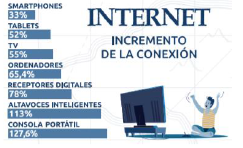doxa.comunicación | nº 31, pp. 19-39 | 23
July-December of 2020
Magdalena Mut Camacho
ISSN: 1696-019X / e-ISSN: 2386-3978
the entire organization (AON, 2019). The management of reputational risk will be successful if it is coordinated with other corporate risks, as they all have an impact on reputation, brand, profit and capital (Vizcaíno-González, 2010). For organisations, measuring their own corporate reputation was already a complicated task (Xifra, 2020), and consequently, trying to calculate their reputation risk is even more complex.
3. Disinformation in the digital environment as reputational risk
The rise of the disinformation phenomenon and media manipulation started just a few years ago, when in November of 2016 the Oxford dictionary named post-truth as its word of the year, or when Time magazine devoted its April 2017 cover to post-truth with the title, “Is truth dead?” Or the Washington Post’s gesture when it changed its headline to, “Democracy Dies in Darkness”.
Communication technology has facilitated the spread of untruths and manipulated information. Moreover, the visibility of falsehoods is greater than ever they expand exponentially (McIntyre, 2018). Their power to attack lies in virality, thanks to the communication channels available and the type of content inherent in false discourse. According to a study by the Massachusetts Institute of Technology, falsehoods on Twitter are 70% more likely to be retweeted. The propagation of untruths is faster, more powerful and more extensive. The reason for the success of the virality of falsehoods, as opposed to telling the truth, is its novel and emotional content (Vosoughi, Roy and Aral, 2018).
Companies are exposed to this hyper-connected environment that consumes an overwhelming amount of information, where people not only produce and access content immediately, but also consume and disseminate information instantaneously. Moreover, use of the internet for accessing information during the pandemic increased with regard to connection time with devices in all categories (IACM, 2020).
Image 1. Percentage of increase in internet connection during the confinement in Spain
Source: AIMC (Association for Research on Communication Media)
The steady increase in reputational risk prompted by hyper-connection and fake news were openly discussed at the World Economic Forum in Davos (2020a), where the need to observe reputational risk resulting from disinformation and fake news was endorsed as a requirement that cannot be postponed. Furthermore, representatives of the world economic and
